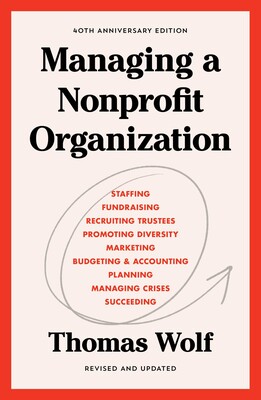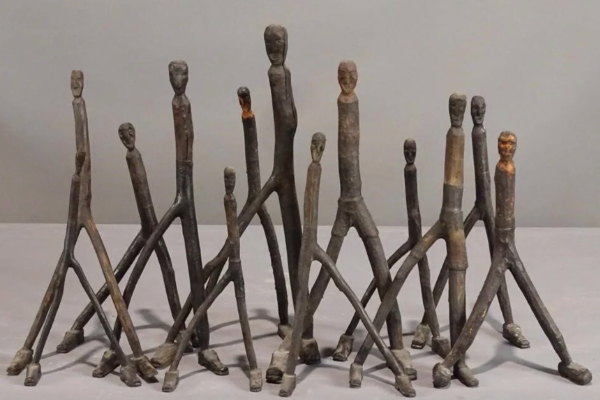Each quarter we will share a list of the resources
(books, articles, films, websites, and events) that have us thinking.
By Kathleen Hill, Dr. Dennie Palmer Wolf, Dr. Thomas Wolf, & Abigale Franco
Issue 2, April 2023
This quarter’s list of items to consider is wildly heterogeneous: films, research, novels, and websites all speaking, in different ways, to the same point: the work of amplifying creative opportunities is everywhere – from the daily habits of how we interview, to the ways in which we audition and cast, to what we choose to research. Have at it!
- Allen, K. A., Gray, D. L., Baumeister, R. F., & Leary, M. R. (2022). The need to belong: A deep dive into the origins, implications, and future of a foundational construct. Educational psychology review, 34(2), 1133-1156. This article offers a short review of the concept of belonging, followed by an interview with Roy Baumeister and Mark Leary, who pioneered research on belonging as a fundamental human motivation for human relatedness, critical for human well-being and effort.
- Bohnet, I. (2016). How to take the bias out of interviews. Harvard Business Review. An article urging us to recognize how often we seek to replicate ourselves in hiring, perpetuating gender, race, and class segregation even as we declare our commitment to diversity, equity, and inclusion.
- CAST‘s website offers an introduction to the guidelines and applications of universal design for learning, an approach to the design of environments, objects, materials, and strategies that can be applied to any setting or content to ensure that “all learners can access and participate in meaningful, challenging learning opportunities.”
- Freedom Machines is a 2004 PBS/POV documentary that looks at disability in the age of technology, presenting intimate stories of people ages 8-93, whose talents and independence are being unleashed by access to modern, enabling technologies. Nearly twenty years after the Americans with Disabilities Act of 1990, the film reflects on the gaps between its promises and the realities for our largest minority group–54,000,000 Americans live with disabilities. Whether mainstream tools or inventions such as stair climbing wheelchair (iBOT), Freedom Machines examines the power of technology to save lives.
- Gray, D. L., Hope, E. C., & Matthews, J. S. (2018). Black and belonging at school: A case for interpersonal, instructional, and institutional opportunity structures. Educational Psychologist, 53(2), 97-113. This article discusses what it takes to support the belonging of Black adolescents in high schools, examining interpersonal, curricular, and institutional opportunity structures. It opens up a discussion of research at the intersection of race, belonging, and motivation and the responsibility to think through actionable strategies that can make a difference.
- Haddon, Mark. (2003). The Curious Incident of the Dog in the Night is a mystery novel (which became a play) narrated by Christopher John Francis Boone, a 15-year-old boy who is “a mathematician with some behavioural difficulties” (which may mean he experiences the world and its events with autism spectrum disorder). In 2009, Haddon wrote on his blog that “The Curious Incident is not a book about Asperger’s…if anything it’s a novel about difference, about being an outsider, about seeing the world in a surprising and revealing way.” It is about vision-seeing, and being seen differently.
- imperfect is a film about an unusual company of artists, brought together by an unusual theater company, Denver’s disability-affirmative Phamaly Theatre Company that auditions and performs with actors who bring the uniqueness of difference to the stage. The documentary film follows this company of actors who live with autism, Parkinson’s Disease, cerebral palsy, impaired vision, and multiple sclerosis as they audition for, rehearse, and perform the demanding musical Chicago. The actors are candid, funny, and generous, offering viewers unusual access to their daily lives, dressing rooms, and artistic visions. The film is a ringing confrontation of the fact that while nearly a quarter of the U.S. population has a disability, fewer than 2% of all television characters had a disability, and 95% of top TV show characters with disabilities were played by non-disabled performers (Ruderman 2017).
- ‘The Exhibit’ (2023) is a new reality TV show, produced through a partnership between The Hirschorn Museum, MTV, and the Smithsonian Institution. What’s the prize? $100,000 and an exhibit in the Hirschhorn Museum – the National Museum of Modern Art. With shows like Cash and Carry and Arthur Godfrey’s Talent Scouts, the United States has been fascinated with competition-based reality shows since the 1940s. This obsession has extended through today with shows like Ru Paul’s Drag Race, Eurovision, Survivor, Next in Fashion, and Top Chef. Each of these opportunities are presented as a way to breakthrough structures and cycles that may limit or impede worthy and deserving talents from “making it”, but… do they really? What happens when the show ends? Do these opportunity structures really break the mold or perpetuate long-held biases?
- Stavans, I. (2023). The People’s Tongue. Restless Books. This is the biography of modern American English as told by the very people who have made, re-made, and transformed it: immigrants, foreign visitors, journalists, poets, dictionary makers, actors, jazz singers, musicians, street corner and mega-church preachers, politicians, charlatans, jingle writers, rappers, translators, children and children’s authors, foreigners, students, homemakers, journalists, novelists, and the lady on the bus next to you singing to pass the time. The volume tells the long and winding story of how English became a global language spread through neon signs, slogans, movies, comics, shared language for new nations’ constitutions, the economies of Emily Dickinson, and the raucous voices of Zora Neale Hurston. It is a volume that asks us to acknowledge that English has become “the world’s lingua franca” – elaborated beyond what Noah Webster might ever have dreamed. In its own way, it is an opportunity structure: broadcasting what happens when all comers are welcome.
- Wolf, D. (2010). Building and Evaluating “Freedom Machines”: When Is Arts Education a Setting for Equitable Learning? In Glass, D., Henderson, B., Barnum, L., Kronenberg, D., Blair, K., Jenkins, R., & Hurel, N. A. (Eds.) The Contours of Inclusion: Inclusive Arts Teaching and Learning. Online Submission.: VSA/The Kennedy Center.

- Wolf. T. (2022). Managing a Nonprofit Organization (40th anniversary edition), New York: Simon & Schuster. This newest edition contains a new section about diversity, equity, and inclusion in non-profit settings that explores the many ways in which long-established practices, like interviewing and hiring, need to be re-invented as opportunity structures.

Issue 1, February 2023

- “The Failure of the DEI-Industrial Complex” by Lily Zheng: This December publication from the Harvard Business Review outlines how organizations can hold themselves — and the practitioners they work with — accountable for measurably improving outcomes for marginalized populations. This piece fleshes out how the early promises of the NEA (that the arts belong to all Americans”) might translate into a new generation of promises.
- NextCity focuses on the innovations likely to make cities more just and sustainable. The site focuses on solutions to urban issues leading to a narrative shift about what’s possible, leaving readers knowledgeable and empowered to solve them. A recent post on a bio-digester facility in Chicago, describes how children’s drawings showing how they imagine the facility and its surroundings are an integral input for designers and engineers. It is an example of the inter-penetration of arts, design, and public health envisioned in the UN 2015 sustainable development goals.
- “Community-Based Arts Organizations – A New Center of Gravity” by Ron Chew: From Americans for the Arts Animating Democracy program, Ron Chew’s 2009 report highlights the importance of investing in community-embedded organizations. Consider reading it as a preamble to Catherine Reed Holochwost’s white paper about the Olney Embrace Project.

This post is a part of the Keeping Curious: For Your Library and Toolbox focus of our Amplifying Creative Opportunities newsletter.
Read more pieces from our Amplifying Creative Opportunities newsletter.


